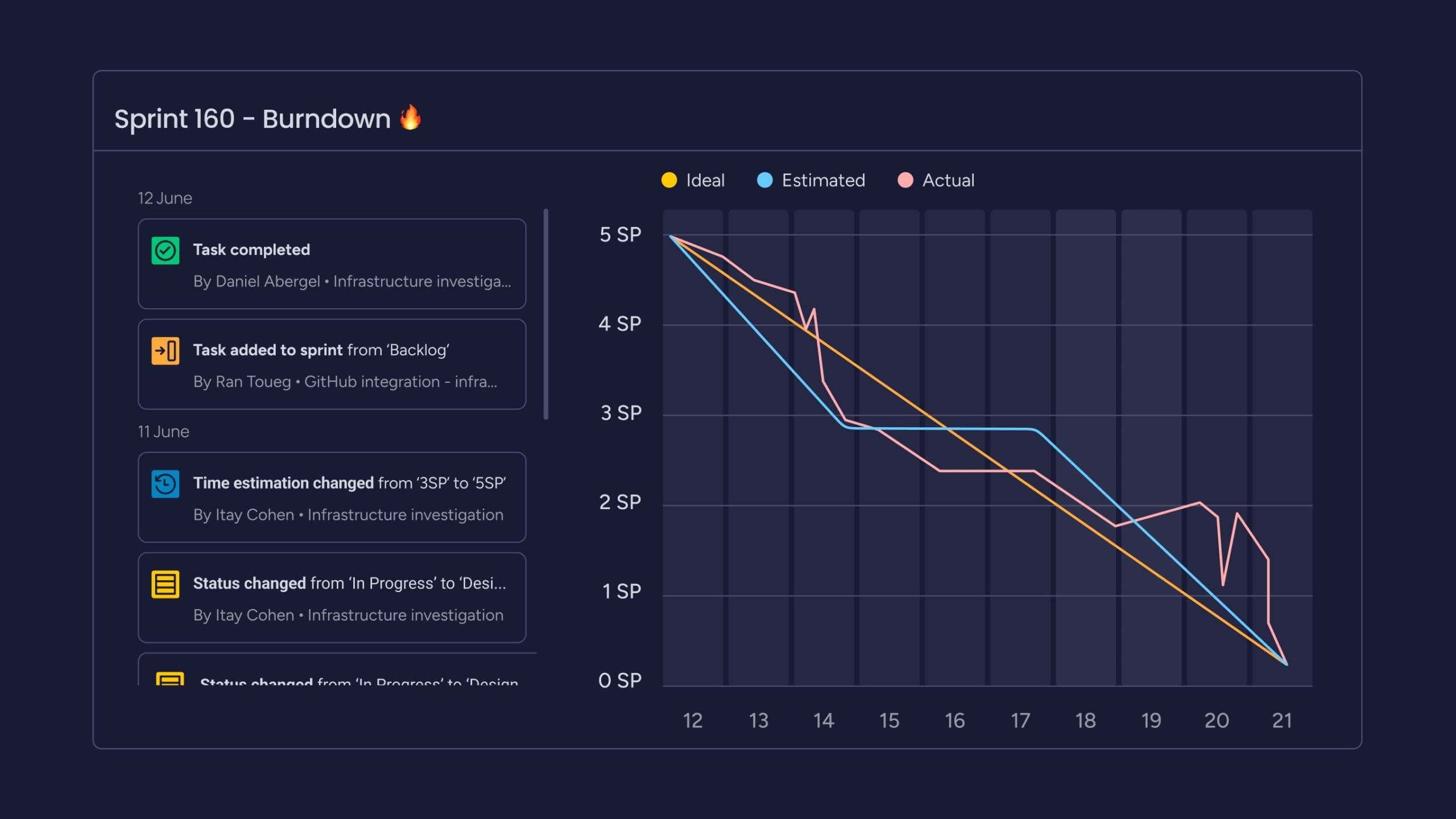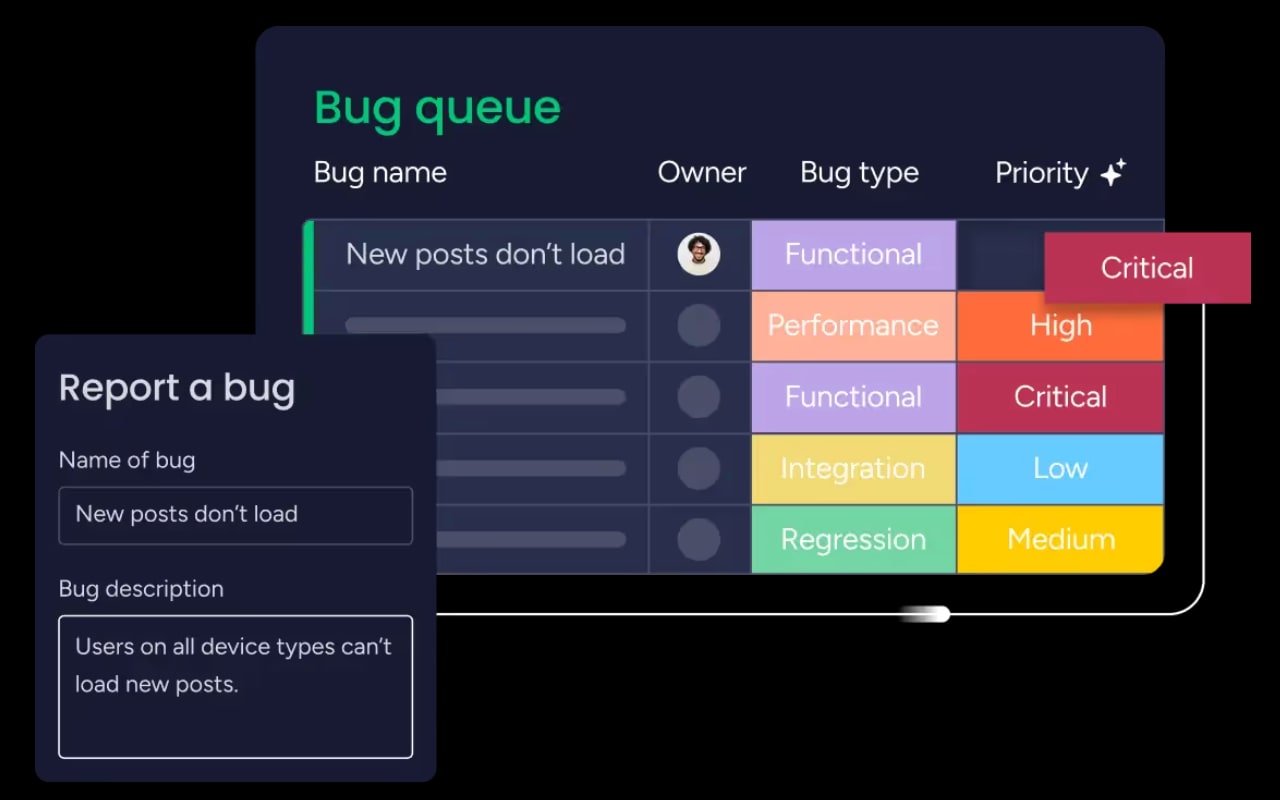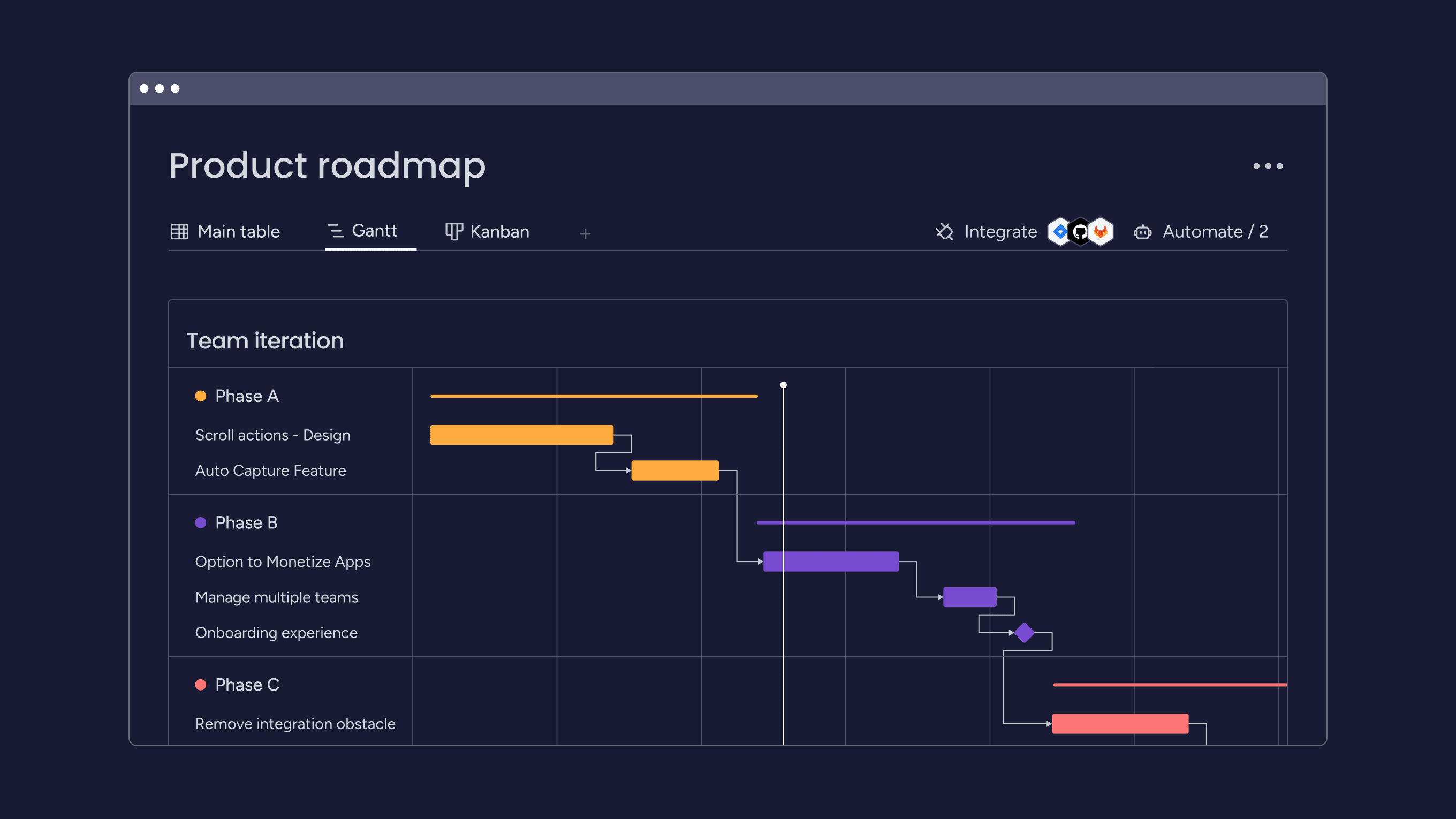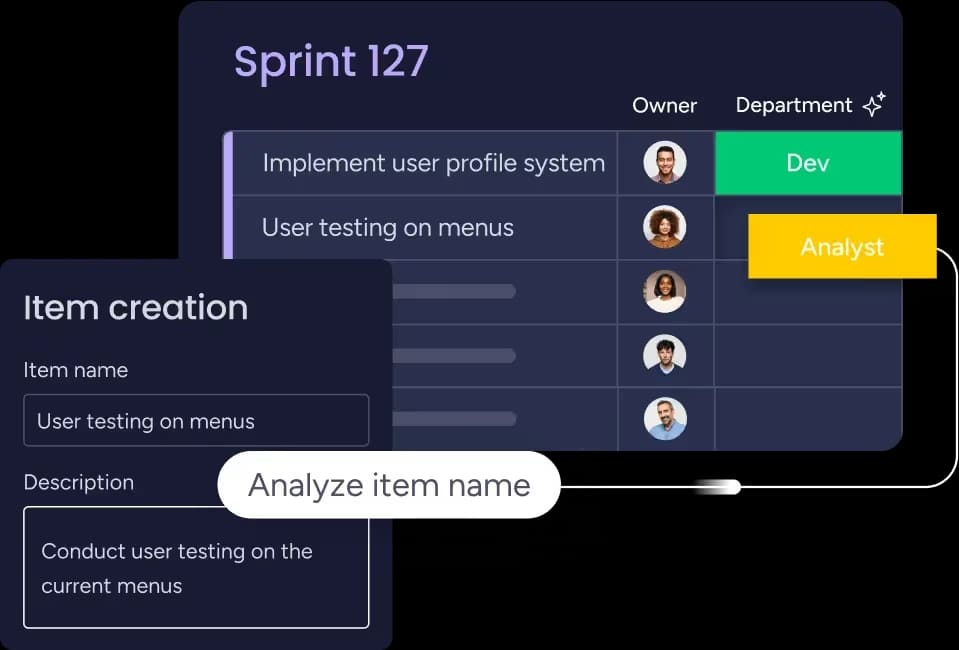Building great software used to be a relay race where each team passed the baton to the next. Business teams handed off requirements, developers wrote code, and operations deployed it. This linear process created friction and delays, making it difficult to adapt when priorities changed.
Modern application development transforms this process into a collaborative effort. It brings together product, design, engineering, and business stakeholders from start to finish. This integrated approach ensures that the resulting software directly solves business problems, meets user needs, and drives measurable growth.
This informative post walks through the entire application development lifecycle, from ideation to maintenance. It explores the core stages, popular methodologies, and the best practices that high-performing teams use to ship products faster.
Understanding these fundamentals is the first step toward building a more aligned and confident development process: one where every team is connected from start to finish.
Key takeaways
- Follow the 7 stages: application development follows seven clear stages, from ideation to maintenance, providing a proven roadmap to transform initial ideas into working software that drives measurable business results.
- Cross-team collaboration is critical: when developers, designers, and business teams work together seamlessly, applications ship faster and are far more likely to meet actual user needs than traditional, siloed processes.
- Modern Teams choose Agile and DevOps: these methodologies deliver working software in short, typically two to four week cycles, enabling rapid feedback and continuous improvement essential for staying ahead of competitors.
- Eliminates platform fragmentation: unified platforms like monday dev connect all teams in one flexible workspace, providing real-time visibility and faster execution without the chaos of juggling multiple disconnected systems.
- AI accelerates the process: AI is transforming how teams build applications by automating routine work (code generation, debugging) and enhancing decision-making through predictive project management and analytics.
What is application development?
Application development is the process of creating software programs that solve specific problems or meet particular needs. This includes everything from planning and design to coding, testing, and ongoing maintenance after launch.
The process is akin to constructing a complex structure, where specialized roles are necessary for success. Just as architects design, builders construct, and maintenance crews maintain a house, application development brings together designers, developers, and testers to create functional software for end-users.
These applications can run across various environments: on your phone, in a web browser, or on your computer; serving countless purposes, from basic consumer tasks like ordering food to managing complex business operations.
The entire development process transforms initial ideas into working software through structured stages that are essential for ensuring both quality and reliability.

How does application development drive business success?
Custom applications give organizations competitive advantages that generic software can’t match. When you build software tailored to your specific needs, you solve problems in ways that directly impact your bottom line.
Consider how operational efficiency improves when applications automate repetitive work for different departments:
- Sales acceleration: CRM applications surface the right customer data at the right moment.
- Preventive maintenance: manufacturing apps predict equipment failures before costly downtime.
- Financial automation: automated reconciliation platforms reduce month-end close from weeks to days.
Customer experience transforms when businesses provide intuitive applications. A healthcare provider’s patient portal that enables appointment scheduling and prescription refills creates loyalty while reducing administrative burden. These improvements drive repeat business and positive reviews.
Revenue growth follows naturally. Companies capitalize on new digital channels, launch innovative products faster, and optimize operations through well-designed applications.
The 7 stages of modern application development
Modern application development follows a structured process that guides teams from concept to launch. Each stage builds on the previous one, creating a clear path from idea to working software.
Step 1: ideation and requirements discovery
This stage identifies the business problem and defines what the application needs to achieve. Teams gather insights through interviews, workshops, and market research.
Key deliverables include a clear problem statement, user personas, and prioritized functional requirements. This foundation prevents costly misunderstandings later.
Stage 2: planning and architecture design
Planning translates requirements into actionable blueprints. Project managers outline timelines and budgets while architects decide on technology stacks.
Teams choose between architectural patterns like microservices or monoliths based on scalability needs and team expertise. These decisions shape everything that follows.
Stage 3: prototyping and user experience
Prototyping creates visual mockups that show how the application will look and feel. A prototype is an interactive, simplified version used to gather feedback before heavy investment in development.
UI designers ensure layouts are intuitive. UX specialists refine navigation based on user testing. This iterative feedback shapes the design before coding begins.
Stage 4: development and implementation
Development is where designs become functional software. Front-end developers build what users see: buttons, forms, and navigation. Back-end developers create the logic and databases that power everything behind the scenes.
Teams use version control systems like Git and regular code reviews to ensure quality. Collaboration keeps the codebase consistent and maintainable.
Stage 5: testing and quality assurance
Testing ensures the application works as intended before it reaches users, preventing costly fixes after launch. A comprehensive quality assurance strategy uses several layers of testing to catch different types of issues:
- Unit testing: checks individual components in isolation.
- Integration testing: verifies how parts work together.
- User acceptance testing: confirms the app meets user needs.
Thorough testing catches bugs early, reducing expensive fixes after launch.
Stage 6: deployment and release management
Deployment makes the application available to users. Teams use staging environments to test final versions before going live.
Release management includes planning for rollbacks and coordinating communication. Continuous deployment platforms automate much of this process for faster, more reliable releases.
Stage 7: maintenance and continuous improvement
Applications need ongoing care after launch. Teams monitor performance, fix bugs, and release new features based on user feedback.
This stage includes security patches, infrastructure updates, and performance optimization. Continuous improvement ensures the application stays valuable as needs evolve.

How application development works in practice
Application development becomes much easier to understand when you see how the process unfolds in a real project. This section walks through what it looks like when ideas move from early concepts to working software used by customers.
From concept to code
Consider a food delivery application. The process typically begins with a foundational concept: efficiently connecting consumers with restaurants to achieve a competitive speed advantage.
Product managers initiate the process by interviewing users to identify critical pain points, such as excessively long wait times or complex menu navigation. Designers then create wireframes that visually map out the user flow for browsing and ordering. Development teams subsequently implement the customer-facing interface and construct the robust backend system responsible for order routing.
Quality assurance specialists validate secure payment processes and accurate order routing protocols. Following the application launch, the team continuously monitors user feedback to prioritize and rapidly implement new features, such as real-time driver tracking. This iterative development and refinement cycle persists throughout the application’s entire lifespan.
The role of cross-functional teams
Application development brings together specialists who each contribute unique expertise:
- Developers: write code and fix technical issues.
- Designers: create intuitive interfaces and user experiences.
- Product managers: define goals and align teams with business objectives.
- QA engineers: test for bugs and usability issues.
- DevOps specialists: manage infrastructure and automate deployments.
Iterative development cycles
Modern teams work in short cycles called sprints, typically lasting two to four weeks. Each sprint delivers working software that stakeholders can review.
At the end of each cycle, teams gather feedback and adjust plans. Maybe users don’t like a planned feature; the team pivots to something more valuable. This approach reduces the risk of building the wrong thing.
5 types of application development every team should know
Not all applications are built the same way. The approach you choose has a major impact on speed, scalability, and the experience you deliver. Here are the five development types that matter most for modern teams and when to use each one.
1. Web application development
Web applications run in browsers, accessible from any device with internet access. Examples include Gmail, Slack, and online banking platforms.
These applications use responsive design to work on desktops, tablets, and phones. They’re ideal when you need broad accessibility and easy updates, changes deploy centrally without user downloads.
2. Mobile application development
Mobile apps are built specifically for smartphones and tablets. Native apps target one platform (iOS or Android) for best performance. Hybrid apps use one codebase for multiple platforms.
Mobile development considers app store distribution, device features like cameras and GPS, and offline functionality. Choose native for performance-critical apps, hybrid for faster multi-platform deployment.
3. Enterprise application development
Enterprise applications serve large organizations with complex needs. They integrate with existing systems like ERPs and CRMs while maintaining strict security standards.
Examples include customer relationship management platforms and workflow automation systems. These projects require close collaboration with IT departments to ensure seamless integration.
4. Cloud-native application development
Cloud-native apps are built specifically for cloud environments like AWS or Azure. They leverage automatic scaling and on-demand resources.
An e-commerce platform built cloud-native can handle Black Friday traffic spikes automatically. This approach suits organizations prioritizing agility without heavy infrastructure investments.
5. Low-code application development
Low-code platforms let users build applications with minimal coding through drag-and-drop interfaces. They’re accessible to business users who understand processes but lack programming skills.
These platforms excel at simple workflows and internal platforms. However, they may lack the flexibility needed for complex, mission-critical applications.
Application development vs software development explained
While often used interchangeably, these terms have important distinctions. Software development is a broad field that covers all types of software, including operating systems, drivers, and utilities, whereas application development focuses specifically on user-facing programs that solve specific problems.
Software development covers all types of software — operating systems, drivers, utilities. Application development focuses on user-facing programs that solve specific problems.
Key differences include:
- Scope: applications serve end users; software includes system-level programs.
- Timeline: applications use shorter cycles; software may have longer release schedules.
- Teams: application teams include designers and product managers; software teams may focus on deeper technical challenges.

Popular application development methodologies
Teams choose methodologies based on project needs and organizational culture. Each approach offers distinct advantages for different scenarios.
- Agile development: organizes work into two to four week sprints that deliver working software. Teams prioritize adaptability and continuous improvement through regular retrospectives. This approach suits projects where requirements evolve and speed matters. Platforms like monday dev support Agile teams with features like customizable sprint boards and real-time collaboration.
- DevOps practices: bridges development and operations through automation and collaboration. Teams automate testing and deployment for faster, more reliable releases. This method reduces handoffs and downtime, creates shared responsibility for application health, and is ideal for organizations seeking to accelerate release cycles.
- Rapid Application Development (RAD): prioritizes speed through prototyping and continuous user feedback. Teams create working prototypes early and iterate quickly based on user learning. While fast, this focus may sacrifice scalability in complex projects. RAD works best for smaller applications or proof-of-concept initiatives.
- Waterfall approach: divides development into strict sequential phases (requirements, design, implementation, testing, deployment). Each phase must be completed before the next begins. This approach remains relevant for projects with fixed requirements or strict regulatory needs (e.g., medical device software).
- Hybrid methodologies: combine elements from multiple methodologies (e.g., using Agile for features but Waterfall for compliance documentation). These models offer flexibility to balance speed, quality, and compliance based on the unique constraints of the project.
How AI is transforming application development
AI is rapidly reshaping how teams plan, build, and ship software. What once required hours of manual work can now happen in minutes, giving development teams the speed and clarity they need to stay ahead.
Here’s how AI is changing application development in practice.
AI-assisted coding and development
AI coding assistants provide real-time suggestions and generate code blocks based on context. These platforms act as virtual pair programmers, helping developers write faster with fewer errors.
Developers describe functionality in plain language and receive code suggestions. While AI accelerates coding, human expertise remains essential for architecture and business alignment.
Intelligent testing and debugging
AI testing platforms automatically generate test cases and detect bugs by learning from previous cycles. They identify security vulnerabilities and edge cases manual testing might miss.
Debugging platforms analyze error logs to suggest root causes and fixes. This dramatically reduces troubleshooting time, especially in complex distributed systems.
Natural language to code generation
Natural language processing lets developers describe functionality in English and receive code templates. This lowers barriers for non-developers to contribute ideas.
Current systems handle simple logic well but require human oversight for complex requirements. The technology excels at accelerating initial development and prototyping.
Predictive analytics for project management
AI analytics forecast timelines and identify risks by analyzing historical data and team patterns. These platforms help teams anticipate bottlenecks before they impact delivery.
AI capabilities provided by solutions like monday dev categorize work automatically and generate sprint summaries with actionable recommendations. This transforms project management from reactive to proactive.

The platform revolution in application development
As applications grow more complex, teams can’t afford to work across disconnected tools. A new generation of unified platforms is transforming how development happens by bringing planning, coding, testing, and collaboration into one place. This shift is redefining what efficient application development looks like.
Why are teams moving beyond fragmented systems?
Multiple disconnected platforms lead to several critical problems:
- Poor alignment: roadmaps and documentation live in separate systems.
- Limited visibility: progress tracking becomes difficult across platforms.
- Information sprawl: data scattered across spreadsheets, chat, and email.
Developers waste hours updating multiple systems instead of building features. This overhead demoralizes teams and drives talent away.
Benefits of unified development platforms
Unified platforms like monday dev provide a single source of truth connecting all teams. Benefits include:
- Improved collaboration: all teams work from the same platform.
- Enhanced visibility: real-time dashboards show progress instantly.
- Streamlined workflows: automation reduces manual data entry.
- Faster execution: less context switching means more focus on delivery.
- Reduced costs: one platform replaces multiple solutions.
Making the transition from legacy systems
Transitioning requires careful planning to avoid disrupting ongoing work. Start by mapping current workflows and prioritizing which teams to migrate first.
Leadership support helps teams embrace change. Platforms like monday dev provides templates and migration support to accelerate adoption and realize value quickly.
Application development: best practices for success
Successful application development isn’t just about writing code, but about building the right thing, the right way. These proven practices help teams deliver quality software faster while avoiding common pitfalls that derail projects.
- Start with user-centric design: conduct interviews and validate designs with real feedback before coding.
- Embrace Agile methodologies: use sprints and retrospectives to deliver value incrementally.
- Prioritize security from day one: build security into every stage rather than patching later.
- Build for scalability: design for growth using modular architectures and cloud resources.
- Implement continuous integration: automate testing and deployment to catch issues early.
- Foster cross-team collaboration: use shared platforms and clear documentation.
- Invest in developer experience: provide modern platforms and clear processes.
- Automate testing and deployment: reduce manual errors and increase release speed.
- Document as you build: capture key decisions and setup instructions.
- Plan for maintenance: allocate resources for ongoing updates and monitoring.

"monday dev empowered us to optimize our GTM approach, resulting in faster, more dependable deliveries"
Steven Hamrell | Director of Product Management
"monday dev empowers us to manage the entire development process on one platform so we can speed up product delivery and improve customer satisfaction"
Mitchel Hudson | Head of Technology
"We're operating in an open, deep trusting, transparent environment with no silos of information. It's about completely opening access to everyone who needs it."
Alan Schmoll | Executive Vice President, Vistra PlatformEssential skills for application development teams
Effective application development depends on teams that can code well, collaborate smoothly, and adapt quickly as priorities shift. The skills below reflect what high-performing teams rely on to bring great products to life.
Technical proficiencies
The technical foundation is non-negotiable, providing the specific tools and methods needed to write, manage, and deploy robust software:
- Programming languages: JavaScript, Python, Java, or C# for different platforms.
- Database management: both relational and NoSQL systems.
- Version control: Git for code tracking and collaboration.
- Testing frameworks: automated testing with Jest, Selenium, or JUnit.
- API development: building and consuming APIs for system integration.
Soft skills that matter
Beyond coding ability, a team’s success hinges on its collective ability to communicate, collaborate, and navigate complexity:
- Communication: translating technical concepts for stakeholders.
- Problem-solving: breaking complex challenges into manageable pieces.
- Teamwork: creating environments where people help each other succeed.
- Adaptability: pivoting quickly as priorities and technologies change.
Emerging skills for 2026
To stay competitive, development teams must actively cultivate knowledge in areas that are rapidly reshaping the future of software creation:
- AI integration: understanding how to incorporate AI capabilities.
- Cloud expertise: knowledge of serverless and container technologies.
- Security awareness: understanding vulnerabilities and compliance.
- Data analysis: making decisions based on metrics and user behavior.
Transform your application development with monday dev
Modern development teams need tools that support fast iteration, real-time visibility, and seamless collaboration. monday dev brings all of this together in one flexible workspace, giving your team the structure and freedom to build better applications at scale.
Break free from rigid development platforms
Features within monday dev offer flexibility without sacrificing structure. Teams modify workflows as needs evolve: add custom columns, configure automations with the visual builder, and reorganize sprint boards instantly without touching code.
Unlike rigid systems requiring administrator tickets for simple changes, monday dev empowers teams to adapt their processes. Use pre-built templates for Scrum and Kanban workflows, then customize them with drag-and-drop simplicity. A development team can also create separate boards for epics, sprints, and bug tracking — all connected through our mirroring and dependency features.
Enable true cross-team collaboration
True cross-team collaboration is enabled as monday dev connects all stakeholders in one platform through its unified Work OS. Marketing tracks feature launches on roadmap boards while developers manage sprints using dedicated dev boards, all with real-time visibility through connected workflows and two-way integrations.
The platfrorm’s @mentions, updates section, and centralized documentation eliminate silos and reduce miscommunication: everyone sees the same information through customizable dashboards, updated instantly via our real-time sync, without endless status meetings.
Gain visibility without sacrificing speed
With monday dev, customizable dashboards provide instant insights into sprint progress, velocity metrics, and blockers through widgets like burndown charts, timeline views, and workload management. Leadership gets answers through automated reports without disrupting team workflows.
To ensure proactive management, monday dev’s AI capabilities automatically categorize tasks, predict delivery dates, and generate sprint summaries with actionable recommendations. These AI-powered insights help managers make confident decisions while teams maintain their velocity using integrations for seamless code management with GitHub, GitLab, and Jira.
Frequently asked questions
What programming languages should I learn for application development?
The most versatile programming languages to learn for application development are JavaScript, Python, and Java. JavaScript powers web applications, Python excels at backend development and data processing, while Java remains dominant in enterprise environments.
How much does application development typically cost?
Application development costs vary widely based on complexity and features. Simple applications might cost $10,000 – $50,000, while complex enterprise solutions can exceed $500,000 depending on requirements, platforms, and team location.
What's the difference between native and hybrid mobile apps?
Native mobile apps are built specifically for one platform (iOS or Android) using platform-specific languages, offering the best performance and user experience. Hybrid apps use web technologies wrapped in a native container, allowing one codebase to run on multiple platforms with some performance trade-offs.
How long does it take to develop an enterprise application?
Enterprise application development typically takes 6-18 months depending on complexity, integrations required, and team size. Factors like compliance requirements, legacy system integration, and organizational change management often extend timelines.
What are the 7 stages of app development?
The seven stages of app development are ideation and requirements discovery, planning and architecture design, prototyping and user experience, development and implementation, testing and quality assurance, deployment and release management, and maintenance and continuous improvement.
Should my team use low-code or traditional development?
Low-code platforms work well for simple internal platforms and rapid prototyping with limited customization needs. Traditional development provides full control and scalability for complex, mission-critical applications requiring unique functionality or high performance.
 Get started
Get started 

